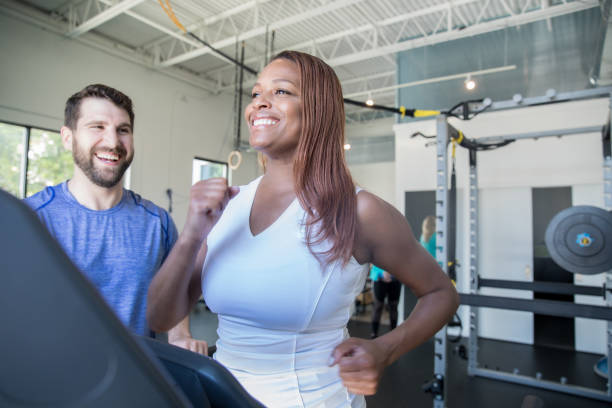(Akiit.com) Most people think personal trainers are just there to yell motivational things while you do burpees and maybe spot you on the bench press. That’s part of it, sure, but if that’s all someone’s getting from their trainer, they’re probably not working with a very good one. The real value of quality coaching goes way deeper than just having someone watch you exercise.
A decent trainer can count reps and make you sweat. A good trainer does things most people don’t even realize they’re paying for, and those hidden elements are usually what make the difference between someone who sees real progress and someone who spins their wheels for months while wondering why nothing’s changing.

They’re Reading Your Body Language Before You Even Start
Walk into a session and a good trainer is already picking up on things before the warmup starts. How someone moves when they walk in the door tells a story about what’s going on with their body that day. Are they favoring one side? Moving stiffly? Seems tired or stressed? All of that matters for how the session should go.
This is where experience really shows up, because it’s not something you can learn from a textbook. Someone might say they feel fine, but their shoulders are up around their ears and they’re moving like everything hurts. A trainer who knows what they’re doing will adjust the plan on the spot rather than just pushing through the scheduled workout and risking an injury.
The same goes for tracking progress that’s not obvious. Sure, weight on the bar matters, but so does how someone’s moving through the exercises compared to last month. Is their form getting cleaner? Are they recovering faster between sets? Can they hold positions longer with better control? These improvements often show up before the scale or the weights change, and recognizing them keeps people motivated when they think nothing’s happening.
Programming That Actually Makes Sense for Your Life
Anyone can throw together a list of exercises and call it a workout plan. Building a program that fits someone’s actual life, goals, and limitations while still getting results takes a lot more thought than most people realize.
A good trainer is thinking several weeks ahead, not just planning tomorrow’s session. They’re considering how much recovery time someone needs based on their age, fitness level, and what else they’re doing outside the gym. They’re building in variety so things don’t get boring but keeping enough consistency that the body actually adapts and gets stronger. They’re planning around someone’s schedule, energy levels, and any old injuries that might flare up.
Here’s where working with someone like Andy Griffiths at Expert PT makes a difference, because experienced trainers have seen what actually works long-term versus what just sounds good on paper. They know when to push harder and when to back off, when to switch things up and when to stick with what’s working. That kind of judgment comes from working with a lot of different people over time and paying attention to what produces results.
The problem is that most generic workout plans you find online don’t account for any of this. They’re designed for an imaginary average person who doesn’t exist. Real programming considers that someone might have a dodgy knee from an old football injury, works a stressful job with long hours, and can only train three days a week. Those details completely change what makes sense for their training.
They’re Teaching You Things You Don’t Know You’re Learning
A lot of what good trainers do is education that happens so naturally most people don’t realize they’re being taught. Over time, clients start understanding why certain exercises work better for their goals, how to tell if they’re working hard enough, and what proper form should feel like in their own body.
This matters because eventually most people want some independence in their training, even if they keep working with a trainer. Understanding the reasoning behind different exercises and programming choices means someone can make smarter decisions about their fitness even outside of sessions. They start to develop an instinct for what their body needs on any given day.
Good trainers are also constantly teaching proper movement patterns without making it feel like a lecture. They’re cueing form corrections in ways that make sense and helping people develop body awareness that carries over into everything they do. Learning how to properly hinge at the hips or brace your core isn’t just about doing a safer deadlift, it’s about moving better when you’re picking up groceries or playing with your kids.
The Accountability That Nobody Wants to Admit They Need
This is the part that sounds simple but makes a huge difference for a lot of people. Having a set time when someone’s expecting you to show up and work out changes the equation completely compared to relying on motivation alone. It’s way easier to skip a workout when nobody will know or care, but bailing on a session with a trainer means either paying for time you didn’t use or having an awkward conversation about why you didn’t show up.
But get this: the accountability piece goes beyond just showing up. Good trainers are tracking progress in ways that keep people honest about whether they’re actually doing the work or just going through the motions. They’re asking about nutrition, sleep, and stress levels because all of that affects results. They’re noticing when someone’s been half-hearted for a few sessions and figuring out what’s going on.
The psychological side of training gets overlooked, but it’s huge. When progress slows down or someone hits a plateau, a good trainer helps them push through that frustration rather than giving up like they might on their own. They’re there on the days when motivation is completely gone and discipline needs to carry things, which is when most people quit their fitness goals entirely.
Injury Prevention That You Hopefully Never Notice
One of the most valuable things a good trainer does is keep people from hurting themselves, but since the whole point is that injuries don’t happen, clients often don’t realize how much work goes into that prevention.
This means watching for form breakdown when someone gets tired, knowing which exercises to avoid or modify based on someone’s injury history, and understanding when pushing through discomfort is fine versus when it’s a warning sign that something’s wrong. The difference between muscle fatigue and actual pain is important, and experienced trainers know how to read those signals.
They’re also building programs that balance different movement patterns so nothing gets overworked while other areas get weak. If someone’s always pushing but never pulling, always doing quad-dominant exercises but ignoring the hamstrings, always going heavy but never working on mobility, problems will show up eventually. Good programming prevents those imbalances before they become issues.
Most people don’t see this prevention work because nothing goes wrong. They just keep training consistently without mysterious aches and pains that sideline them for weeks. That’s the goal, but it takes constant attention to movement quality and program design that most people don’t appreciate until they try training on their own and suddenly everything hurts.
What This Really Means for Getting Results
The difference between mediocre training and good training shows up in the long run. Someone can get results short-term with almost any approach if they’re working hard and eating right, but sustainable progress over months and years requires the kind of attention and expertise that quality coaching provides.
Good trainers are part coach, part teacher, part psychologist, and part injury prevention specialist all rolled into one. They’re making dozens of small decisions every session based on what they’re seeing and how someone’s responding that day. They’re thinking about the big picture of where someone’s heading while managing the details of each individual workout.
Most people don’t need someone to count their reps. They need someone who understands how to build effective programs, can teach proper movement, knows when to push and when to ease back, and will keep them consistent even when motivation tanks. That’s what actually produces results that last, and it’s worth a lot more than just having a workout buddy who shouts encouragement.
Staff Writer; Ricky Brown







Leave a Reply